September 2, 1752, was a great day in the history of sleep.
That Wednesday evening, millions of British subjects in England and the colonies went peacefully to sleep and did not wake up until twelve days later.
Behind this feat of narcoleptic prowess was not some revolutionary hypnotic technique or miraculous pharmaceutical discovered in the West Indies. It was, rather, the British Calendar Act of 1751, which declared the day after Wednesday the second to be Thursday the fourteenth.
Prior to that cataleptic September evening, the official British calendar differed from that of continental Europe by eleven days that is, September 2 in London was September 13 in Paris, Lisbon, and Berlin. The discrepancy had sprung from Britain's continued use of the Julian calendar, which had been the official calendar of Europe since its invention by Julius Caesar (after whom it was named) in 45 B.C.
Caesar's calendar, which consisted of eleven months of 30 or 31 days and a 28-day February (extended to 29 days every fourth year), was actually quite accurate: it erred from the real solar calendar by only 11 minutes a year. After centuries, though, even a small inaccuracy like this adds up. By the sixteenth century, it had put the Julian calendar behind the solar one by 10 days.
In 1582, Pope Gregory XIII ordered the advancement of the calendar by 10 days and introduced a new corrective device to curb further error: century years such as 1700 or 1800 would no longer be counted as leap years, unless they were (like 1600 or 2000) divisible by 400.
If somewhat inelegant, this system is undeniably effective, and is still in official use in the United States. The Gregorian calendar year differs from the solar year by only 26 seconds accurate enough for most mortals, since this only adds up to one day's difference every 3,323 years.
Despite the prudence of Pope Gregory's correction, many Protestant countries, including England, ignored the papal bull. Germany and the Netherlands agreed to adopt the Gregorian calendar in 1698; Russia only accepted it after the revolution of 1918, and Greece waited until 1923 to follow suit. And currently many Orthodox churches still follow the Julian calendar, which now lags 13 days behind the Gregorian.
Why So Difficult?
Since their invention, calendars have been used to reckon time in advance, and to fix the occurrence of events like harvests or religious festivals. Ancient peoples tied their calendars to whatever recurring natural phenomena they could most easily observe. In areas with pronounced seasons, annual weather changes usually fixed the calendar; in warmer climates such as Southern Europe, Africa, and the Middle East, the moon was used to mark time.
Unfortunately, the cycles of the sun and moon do not synchronize well. A lunar year (consisting of 12 lunar cycles, or lunations, each 29 days long) is only 354 days, 8 hours long; a solar year lasts about 365 days. After three years, a strict lunar calendar would have diverged from the solar calendar by 33 days, or more than one lunation.
The Muslim calendar is hence the only purely lunar calendar in widespread use today. Its months have no permanent connection to the seasons Muslim religious celebrations, such as Ramadan, may thus occur at any date of the Gregorian calendar.
The phases of the moon have nonetheless remained a popular way to divide the solar year, if only because a 365-day year doesn't exactly lend itself to equal subdivision (the 71-day month has yet to find favor among menologists). To compensate for the difference in the solar and lunar year, calendar makers introduced the practice of intercalation the addition of extra days or months to the calendar to make it more accurate. The semilunar Hebrew calendar, consisting of twelve 29- and 30-day months, adds an intercalary month seven times every 19 years (which explains the sometimes confusing drift of Passover and consequently Easter through April and March).
This wonderful bit of information was gained by the writings of Ben Snowden.
But let us look at the historical record. After September 1752, everything that preceeded it was really messed up. If you look at the graves of George Washington, John Adams, Thomas Jefferson, James Madison and many other American historic figures you will see on their graves or on place or memorials at date saying (old style)..So for those folks who were born before 1752 it was really confusing.
What I find most interesting is when we talk of a historic event taking place on such a date 500 years ago....Old style or New style I always ask????
So I wish you all a Happy New Year (new Style) and a Happy mid January (old style)...
Just like many other events, we really do not give them much thought, as to where they have come from.
Best wishes to you all in this new year Happy 2007!
My name is Jack Stanley, I have studied history for many years. This blog is about history in a more raw view, not over done. I often use original materials to bring a historic event or story to life or an interview I may have done with the person mentioned. If you cook a vegetable too long it loses much. The same can be said of many histories. They are the history of the history written before it. Over done history. THIS IS HISTORY IN THE RAW. Comments send to phonograph78@hotmail.com
Sunday, December 31, 2006
Thursday, December 28, 2006
President Gerald R. Ford..1913-2006 ..I wrote this piece a few months ago, My day I spent with him.Nov. 10, 1999...
I would like to express my sadness at the passing of President Gerald R. Ford. He was President when I was in High School. He was also a warm and friendly man. I was very lucky to spend some time with him in 1999 as I was there doing recordings in my recording program. Now as we recall and remember this man, I hope this story will make you see what a nice man he was, and he sure was too me.
I have changed it around some to fit with present situation. I will write a history of Ford in a few days.

President Gerald R. Ford signed his autobiography for me when I and my team were his guests at his compound in Rancho Mirage, California. He carried the book into his office and sat at his deck and signed it and brought it back to me. At that time I met Betty Ford, and one of the ford dogs who gave me a real good sniff.
 Ford's autobiography that he carried to his office. He was such a simple, warm, real, person...I feel so lucky to have spent some time with him.
Ford's autobiography that he carried to his office. He was such a simple, warm, real, person...I feel so lucky to have spent some time with him.

Gerald R. Ford when he was President

President Ford and I listen to a cylinder of President Theodore Roosevelt on an Edison phonograph circa 1910. He was born the year after that recording was made. It was a special moment as the 26th President spoke to the 38th...That was really a special moment, and was a remarkable moment in time. Ford said that you could do Roosevelt's speech today! It really was a historic moment.

Talking about how recordings were made as I held a wax cylinder in my hand to show him. We talked of that and many other subjects with the President. We had a really good time.
The President wrote me afterwards saying that he really enjoyed the visit and playing with the recordings and making a few cylinders recordings for me.
He remembered his parents had an early phonograph. He said at the time "I do not know how they afforded it". He explained his father (even though Gerald Ford Sr. was his step father he always regarded him as his father)had a paint store. Life for them was simple..He remembered as a boy listening to the old records on the phonograph. We talked about so many subjects including the Warren Commision, and the movie JFK, Jazz music, His family, the history of sound recording, Jack Ruby, his life at the time,and how much fun he was having making these records that we made. It was a great day!
It is amazing but it was seven years ago today I was in California and interviewing and recording former President Gerald R. Ford. He is a wonderful man. Full of good thoughts and interesting facts. He was 86 years of age when I recorded him.
His compound was a fascinating place. Secret Service were all around. I went there with my team to make a historic recording. Make it we did.
Gerald Ford historically is one of our most interesting of Presidents. He was not elected, nor was his Vice President Nelson Rockefeller. He represents an interesting period in American history when the entire government was in confusion.
He was put into office by Richard Nixon, and he was not elected to that office either.
He had a certain grace about him. He is not at all like the fellow who is often pictured in the press as a dense fellow. That was so unfair.
He was very funny. He told me "Not bad for 86, huh?"....He said that he swam 2 times a day.
I know the day I met him he was having fun talking about his grandson who was 3 at the time. He said he was going to teach him to golf. But he said his grandson swings his club so wild...We all laughed.
He said he would often go for walks at night with John F. Kennedy..He was also the last survivor of the Warren commission. He told us about being in a jail cell with Jack Ruby. He talked of the movie JFK. "It's a good movie" he said, "just not correct"...
We had a good time making the recordings, and after we sat down and listened to a cylinder recording of Theodore Roosevelt...Ford said "you could do that speech today"
I know the quote by Lyndon Johnson...I think most people do. But for the few who don't here is it basically. "Gerald Ford played football too long without a helmet".
Well, I don't think Lyndon Johnson liked anyone but himself anyway...So it means little to me.
The man I met on November 10, 1999 was a smart, graceful, strong, and energetic man of 86 years.
He had originally said that we had about 15 minutes. But soon we were talking and recording and an hour went by...Ford spoke on many things. I will write more about him in some future posts.
I remember that Peter Jennings had 2 autographs on his desk at his office in ABC. One of them was a autographed picture of Gerald Ford. I remember Peter Jennings said of Ford that he had guts and did what he thought best for the country, even if it cost him the election.
President Ford also received the Profiles in Courage award from the John F. Kennedy Library for pardoning Nixon. Many thought it was wrong to do, But Ford knew if he did not it could have destroyed the Presidency. He said to me that he would easily do it again as he felt it was the right thing to do. Today everyone sees his wisdom in doing so.
Today I wanted to remember him, and what a great man he was. He saved the Presidency.
He was the oldest President ever....
He told me many stories of his life and his father who had a paint store. Mr. President, thank you for sharing a wonderful day with me 7 years ago. You gave me a lifetime of wonderful memories of a special day in Rancho Mirage.
I remember the last thing that the President said to me as I was leaving and picking up my Edison phonograph...He said "Thank you, this was enjoyable, and that is quite a unit" I said to him, thank you Mr. President and he said goodbye....
So today December 26, 2006 Gerald Ford left us. He was very important in saving the Presidency.....I really liked him. and I was lucky to know him for a brief moment of time.
I have changed it around some to fit with present situation. I will write a history of Ford in a few days.

President Gerald R. Ford signed his autobiography for me when I and my team were his guests at his compound in Rancho Mirage, California. He carried the book into his office and sat at his deck and signed it and brought it back to me. At that time I met Betty Ford, and one of the ford dogs who gave me a real good sniff.
 Ford's autobiography that he carried to his office. He was such a simple, warm, real, person...I feel so lucky to have spent some time with him.
Ford's autobiography that he carried to his office. He was such a simple, warm, real, person...I feel so lucky to have spent some time with him.
Gerald R. Ford when he was President

President Ford and I listen to a cylinder of President Theodore Roosevelt on an Edison phonograph circa 1910. He was born the year after that recording was made. It was a special moment as the 26th President spoke to the 38th...That was really a special moment, and was a remarkable moment in time. Ford said that you could do Roosevelt's speech today! It really was a historic moment.

Talking about how recordings were made as I held a wax cylinder in my hand to show him. We talked of that and many other subjects with the President. We had a really good time.
The President wrote me afterwards saying that he really enjoyed the visit and playing with the recordings and making a few cylinders recordings for me.
He remembered his parents had an early phonograph. He said at the time "I do not know how they afforded it". He explained his father (even though Gerald Ford Sr. was his step father he always regarded him as his father)had a paint store. Life for them was simple..He remembered as a boy listening to the old records on the phonograph. We talked about so many subjects including the Warren Commision, and the movie JFK, Jazz music, His family, the history of sound recording, Jack Ruby, his life at the time,and how much fun he was having making these records that we made. It was a great day!
It is amazing but it was seven years ago today I was in California and interviewing and recording former President Gerald R. Ford. He is a wonderful man. Full of good thoughts and interesting facts. He was 86 years of age when I recorded him.
His compound was a fascinating place. Secret Service were all around. I went there with my team to make a historic recording. Make it we did.
Gerald Ford historically is one of our most interesting of Presidents. He was not elected, nor was his Vice President Nelson Rockefeller. He represents an interesting period in American history when the entire government was in confusion.
He was put into office by Richard Nixon, and he was not elected to that office either.
He had a certain grace about him. He is not at all like the fellow who is often pictured in the press as a dense fellow. That was so unfair.
He was very funny. He told me "Not bad for 86, huh?"....He said that he swam 2 times a day.
I know the day I met him he was having fun talking about his grandson who was 3 at the time. He said he was going to teach him to golf. But he said his grandson swings his club so wild...We all laughed.
He said he would often go for walks at night with John F. Kennedy..He was also the last survivor of the Warren commission. He told us about being in a jail cell with Jack Ruby. He talked of the movie JFK. "It's a good movie" he said, "just not correct"...
We had a good time making the recordings, and after we sat down and listened to a cylinder recording of Theodore Roosevelt...Ford said "you could do that speech today"
I know the quote by Lyndon Johnson...I think most people do. But for the few who don't here is it basically. "Gerald Ford played football too long without a helmet".
Well, I don't think Lyndon Johnson liked anyone but himself anyway...So it means little to me.
The man I met on November 10, 1999 was a smart, graceful, strong, and energetic man of 86 years.
He had originally said that we had about 15 minutes. But soon we were talking and recording and an hour went by...Ford spoke on many things. I will write more about him in some future posts.
I remember that Peter Jennings had 2 autographs on his desk at his office in ABC. One of them was a autographed picture of Gerald Ford. I remember Peter Jennings said of Ford that he had guts and did what he thought best for the country, even if it cost him the election.
President Ford also received the Profiles in Courage award from the John F. Kennedy Library for pardoning Nixon. Many thought it was wrong to do, But Ford knew if he did not it could have destroyed the Presidency. He said to me that he would easily do it again as he felt it was the right thing to do. Today everyone sees his wisdom in doing so.
Today I wanted to remember him, and what a great man he was. He saved the Presidency.
He was the oldest President ever....
He told me many stories of his life and his father who had a paint store. Mr. President, thank you for sharing a wonderful day with me 7 years ago. You gave me a lifetime of wonderful memories of a special day in Rancho Mirage.
I remember the last thing that the President said to me as I was leaving and picking up my Edison phonograph...He said "Thank you, this was enjoyable, and that is quite a unit" I said to him, thank you Mr. President and he said goodbye....
So today December 26, 2006 Gerald Ford left us. He was very important in saving the Presidency.....I really liked him. and I was lucky to know him for a brief moment of time.
I do not think that people see the wisdom in pardoning Nixon. ..It saved the country.. though many said it was wrong..time tells us otherwise
Richard Nixon did break the law. Yes he did. If it was allowed to go through the legal system, it would have been the focus of many years of court trials and may have had a terrible effect on the nation as a whole.
The wisdom of Gerald Ford was to spare the country, (rather than Nixon) the horror of such an ordeal. He did it because he knew it was what was needed to be done. It could have torn the country apart.
Few today know what it was like in the 1970's..It was a mess. We had gone through the 1960's and many assassinations and social unrest. It was time of great social and political upheaval. I know I was there and saw it all. I know the mess this country was in ...
I think if there is an event in history that shows real guts, this is it. He did the pardon regardless of the result to his political career.
Today think of a politician who would do that. Thanks to the wisdom of this great man we were spared that.
It was a really special moment when Edward Kennedy presented to Gerald Ford the profiles in courage award at the John F. Kennedy presidential Library in 2001. People there were all against what Richard Nixon represented, but Gerald Ford went beyond all of that. He was for the people and the nation before himself. He saved the Presidency. That took guts and courage beyond what anyone else was willing to do.
I have written several articles over the last day on Ford, but this really is what his legacy will be. He had balls, and he was not afraid to do what he thought was right...and after some time we see how right he really was.
So as we honor this man, remember what he did and how it really ended his career. But it brought us a new beginning in government.
The wisdom of Gerald Ford was to spare the country, (rather than Nixon) the horror of such an ordeal. He did it because he knew it was what was needed to be done. It could have torn the country apart.
Few today know what it was like in the 1970's..It was a mess. We had gone through the 1960's and many assassinations and social unrest. It was time of great social and political upheaval. I know I was there and saw it all. I know the mess this country was in ...
I think if there is an event in history that shows real guts, this is it. He did the pardon regardless of the result to his political career.
Today think of a politician who would do that. Thanks to the wisdom of this great man we were spared that.
It was a really special moment when Edward Kennedy presented to Gerald Ford the profiles in courage award at the John F. Kennedy presidential Library in 2001. People there were all against what Richard Nixon represented, but Gerald Ford went beyond all of that. He was for the people and the nation before himself. He saved the Presidency. That took guts and courage beyond what anyone else was willing to do.
I have written several articles over the last day on Ford, but this really is what his legacy will be. He had balls, and he was not afraid to do what he thought was right...and after some time we see how right he really was.
So as we honor this man, remember what he did and how it really ended his career. But it brought us a new beginning in government.
Wednesday, December 27, 2006
In tribute to President Gerald R. Ford ....1913-2006
I wanted to make a few statements about the 38th President. He was a man who gave the dignity back to the White House. He was loved and liked as he was a good man, and was real. He said to me once as he said to many people "All I wanted to be was Speaker of the House"...But Nixon chose him to replace Spiro Agnew as Vice President.
I was very aware of those days and kept a scrapbook of news articles of that time. It was one of the greatest moments of my life when I got to meet him and spend some time with him in 1999.
August 9, 1974, he became President. He said that he added the comment "Our long national nightmare is over" in his first speech as President.
He also said that if he had to do it again, he would pardon Richard Nixon. Every one said it was awful when Ford pardoned him. But now in hind site, we can all see the wisdom of that move. Yes it may have cost him the election, but in doing so he gave the Government back to the people. For that he is truly a hero.
Peter Jennings said that Ford had guts.
So today as I honor the memory of this great man, I think that many of us should reflect on what he did do.
Also for the many of you who were not around at the time of his Presidency...He gave the office its dignity.
He was truly a man who healed this nation. Facing a constitutional crisis unlike any seen by a President since perhaps Lincoln. He was very unlike what many of our other politicians are like today. He was real, he was good, and he had a sense of honor.
Thank you sir for what you did for this country.
I was very aware of those days and kept a scrapbook of news articles of that time. It was one of the greatest moments of my life when I got to meet him and spend some time with him in 1999.
August 9, 1974, he became President. He said that he added the comment "Our long national nightmare is over" in his first speech as President.
He also said that if he had to do it again, he would pardon Richard Nixon. Every one said it was awful when Ford pardoned him. But now in hind site, we can all see the wisdom of that move. Yes it may have cost him the election, but in doing so he gave the Government back to the people. For that he is truly a hero.
Peter Jennings said that Ford had guts.
So today as I honor the memory of this great man, I think that many of us should reflect on what he did do.
Also for the many of you who were not around at the time of his Presidency...He gave the office its dignity.
He was truly a man who healed this nation. Facing a constitutional crisis unlike any seen by a President since perhaps Lincoln. He was very unlike what many of our other politicians are like today. He was real, he was good, and he had a sense of honor.
Thank you sir for what you did for this country.
Tuesday, December 26, 2006
In fairness to the rigid airship

The US airship Akron

The Macon..last airship made in America

The Hindenburg flying over New York.....The sad accident to the Hindenburg was the only accident to occur to a passenger airship in service. The German Airship service was 100% safer than the airplane service of the time. I will also kill the myth that the Hindenburg was on her maiden voyage. That is not true. She had already carried over a thousand passengers the year before safely. When she did crash in Lakehurst, New Jersey in 1937 there were more survivors than victims.
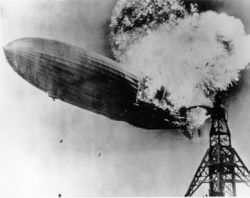
The end of the airship...Just think if we killed off the airplane if there was one accident.....Even today the airline industry is hard pressed to have a safety record like the airship....1929-1937 no accidents
I am seeing that there plans a foot to build a massive airship of over 800 feet in length. The airship has really received had a bad rap for many years.
But to be truthful it was a very safe mode of transportation.
I know every mind turns to the Hindenburg when we think of airships. But, what other disaster comes to mind?
In the area of commercial airship service from 1929 till May of 1937. There was not one fatality on a commercial airship.
There were thousands of people transported in luxury. There was not one accident in those 8 years till the Hindenburg.
Between 1929 to 1937 there were hundreds of commercial and private airplane accidents. Killing hundreds of people.
In the accident of the Hindenburg there were less than 40 deaths. That was the only accident in the history of commercial airship service.
The American military Airship was not lucky, and was to have quite a few really dumb people in charge of them. Not all of them, there were some really sharp people, but many were not up too snuff.
There were 4 US rigid airships between 1922 till 1939. 3 of them crashed. Two were due to human error, and one was due to structural failure.
In England they tried it too, they built quite a few. Most of them crashed..Most due to human error. One was to fly to India, but that crashed just due to politics and stupidity..They over loaded it and it crashed....Amazing!!!
Italy tried it a bit, same luck....
The Germans did a great job of it. Because they knew what they were doing!!!!!
But due to political more than safety issues, the airship was doomed as a major player in transportation.
In 1935 an airplane could not cross the Atlantic, let alone the United States. They had to stop and refuel...People would be cramped inside...and a plane could carry at best 20 passengers. The airships could cross the Atlantic carrying 30 passengers. By the time of the Hindenburg, they could carry 70 passengers in amazing luxury, not to mention a large amount of cargo.
So it was all about Helium..WE had it and we did not want Germany to get it. So the loss was to the airship.
Today we have blimps..They are cute rather than functional.
So when I heard that in Germany they are going to give it a try again I was delighted. This would be for commercial freight purposes only, not for passengers...
We have become used to being put into planes like cattle...But maybe in our future we may see ocean going airships again. To take us all over the world in wonderful luxury.
Next time you get into a plane, and eat your peanuts, think of that!
Friday, December 22, 2006
The universe traveling Edison cylinder of Theodore Roosevelt has touched down with the crew of Discovery and commander Mark Polansky

The Edison cylinder of Theodore Roosevelt has made history. It is the first recording of a President sent to space and brought back. It was recorded in 1912, and 2006 it made history as the Rough Rider and first President to fly went to space. It was special that the cylinder was an Edison one, as Edison created organized research, which is what makes NASA possible.
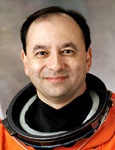
Mark Polansky, the Commander of the Mission who graciously took the cylinder to space with him...What a great thing for him to do. Thank you very much Mark!
 The Discovery lifting off on its latest mission, which was a most successful one at that.
The Discovery lifting off on its latest mission, which was a most successful one at that. 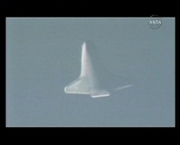
The Discovery as it sailed back onto earth..with her crew and the cylinder.
I had written before about the famous Edison cylinder of Theodore Roosevelt that would go to space. It has been up there for quite a while and is the first recording of a President to go to space and return. It has been really cool to watch the crew of Discovery at work and seeing what a great and successful mission it has been. While doing this I thought I would give you some info on the Discovery.
Space Shuttle Discovery has flown 33 flights, spent 241.95 days in space, completed 3,808 orbits, and flown 98,710,673 statute miles (158,859,429 km) in total, as of December 2006. It has flown the most flights of all Space Shuttles so far (a title it is likely to keep). Discovery has also flown on more individual flights than any other spacecraft in history and is likely to retain this honor for some time as no planned launch vehicles (neither American nor International) have a designed lifespan of more than 10 flights. Discovery has flown both "return to flight" missions after the Space Shuttle Challenger and Columbia disasters: STS-26 in 1988 and STS-114 in 2005.
So the most historic Shuttle took a most historic recording on a most historic flight. Congratulation to the crew of Discovery, NASA, and lastly thank you to Commander Mark Polansky, Edie Polansky, Chris Polansky for making this all happen.
Look to the stars!
Wednesday, December 20, 2006
Body preservation and arsenic. It was an amazing preservative but led to a major problem
Today in the funeral industry we have embalming fluid. It is mainly a formaldehyde mixture with coloring agents to give a dead body the look of life.
The earliest types of embalming fluids used arsenic as its preservation agent. It worked wonderfully. In fact it worked much better than the agents used today.
Today, bodies do not last long in their coffins, and the use of embalming today is to make the dead look good for a few days after death and also for controlling decease. In a dead body it compounds 100 fold every day.
In the 19th century the public funeral for the average man or woman started to become the norm. Before that time it was more reserved for the famous or the elite.
By the time of the American Civil War embalming became much more wide spread as the dead were being shipped home from the battlefield.
Lincoln pushed for the embalming and even when his son Willie died he had his son embalmed.
The agent they used was arsenic..It worked wonderfully and lasted. Lincoln several times went to his son's tomb. Which was borrowed at the time and would open the coffin to gaze on the body of Willie. He did that several times. It showed the lasting factors of arsenic.
When Lincoln himself was assassinated, he was embalmed and went on public display for nearly a month!! Arsenic was used. When Lincoln was exhumed in 1901, he was perfectly preserved. This was a fantastic way to preserve bodies. But we do not use it anymore for 2 reasons.
1. It is a very dangerous chemical, and it can easily kill all those who work with it.
2. It made the perfect crime so easy to commit. Kill them with arsenic and have them embalmed...No one would ever be the wiser.
That is why today we use formaldehyde.....
The earliest types of embalming fluids used arsenic as its preservation agent. It worked wonderfully. In fact it worked much better than the agents used today.
Today, bodies do not last long in their coffins, and the use of embalming today is to make the dead look good for a few days after death and also for controlling decease. In a dead body it compounds 100 fold every day.
In the 19th century the public funeral for the average man or woman started to become the norm. Before that time it was more reserved for the famous or the elite.
By the time of the American Civil War embalming became much more wide spread as the dead were being shipped home from the battlefield.
Lincoln pushed for the embalming and even when his son Willie died he had his son embalmed.
The agent they used was arsenic..It worked wonderfully and lasted. Lincoln several times went to his son's tomb. Which was borrowed at the time and would open the coffin to gaze on the body of Willie. He did that several times. It showed the lasting factors of arsenic.
When Lincoln himself was assassinated, he was embalmed and went on public display for nearly a month!! Arsenic was used. When Lincoln was exhumed in 1901, he was perfectly preserved. This was a fantastic way to preserve bodies. But we do not use it anymore for 2 reasons.
1. It is a very dangerous chemical, and it can easily kill all those who work with it.
2. It made the perfect crime so easy to commit. Kill them with arsenic and have them embalmed...No one would ever be the wiser.
That is why today we use formaldehyde.....
Tuesday, December 19, 2006
The man who shook the food industry down to its foundations...Upton Sinclair 1878-1968
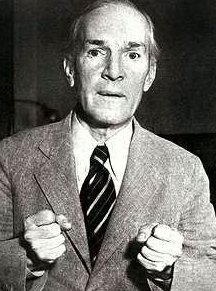 Upton Sinclair
Upton SinclairIt was a book that came out in 1906, called "The Jungle". It was all about immigrants and working in the stock yards and meat processing plants...It brought to the attention of the United States of some of the appalling conditions that existed. It brought about some amazing changes...It prompted the US government and Theodore Roosevelt to push for the Pure Food and Drug Act...Few books have had such an impact in our world. Sinclair was only 28 when he wrote that book. He lived to the ripe old age of 90 and saw such sweeping changes in food processing. But sadly much of the other issues of his book still are very much here and seem to not be going anywhere. The blight of hunger, poverty, and class warfare....
I won't go into too much detail...READ THE BOOK
It was only a century ago...But what changes it made....
Monday, December 18, 2006
Meeting Cab Calloway in 1986..He was a genius, musically, artistically, and verbally.....Hi de ho!
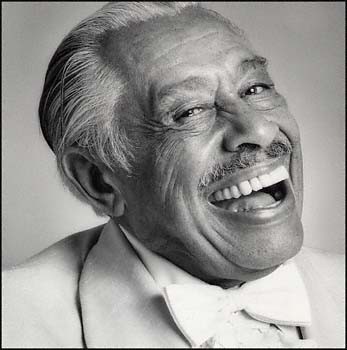
Cab Calloway as I knew him when I met him at the Meadowlands Racetrack in 1986. He loved horse racing and was always at the track when ever he could be.

Calloway signed this for me as I was working at the Racetrack as an entertainer. He said to me "hey we all have to make a living" He was a nice guy and posed with us as we performed there...He was a class act.
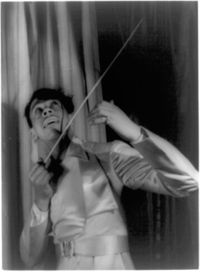
Here he is as a young bandleader, He led his band at the Cotton Club in Harlem...Music and entertainment would never be the same. He changed the style, words, and power of music....He was way ahead of everyone.
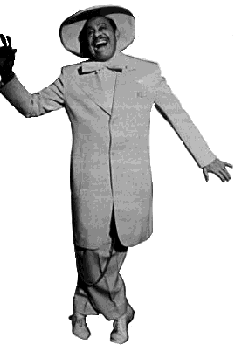
Here he is in a zoot suit.....Singing Minnie the Moocher, which was his theme song...Oh Hi-de-ho!!! He created Jive....He was a Salvador Dali among musicians
He was an artist among artists...He changed our language, our styles, our music. He was one of the greats. I really feel honored to have met him. He shook my hand and smiled and said to me "hey we all have to make a living" I remember I sang for him there at the raceway...Back in the days when I could sing...Now I make noise.
He was all alone I remember ...We came to his table and reconized him and he was charming...We sat around and chatted for a bit and he signed this autograph for me.
Sunday, December 17, 2006
The New York Times Building in New York..Once the home of the NY Times now it has a most interesting function
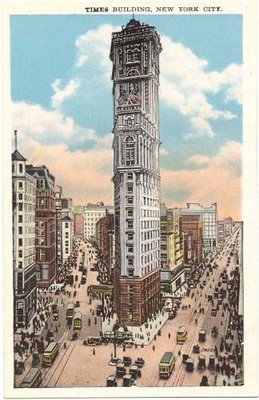
This is the NY Times building on an early post card.
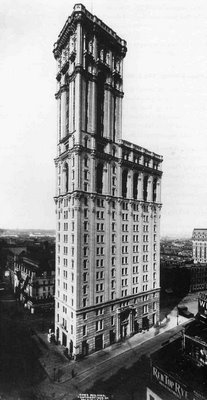
Here is a great photo of the original building shortly after it was completed in 1905

Times Square....in a simpler age. circa 1910
The Times building was one of the first skyscrapers in New York....It has always been the building from where the ball drops on New Years Eve. Ever since 1906.
The Times Company moved from the building in the 1960's.
After that the building went through some major changes and today it is one of the largest billboards in the world. No one lives or works in the building..It is one big piece of advertising...Some of the most expensive ads are on the Times building.
So the next time you go through Times Square and see all that advertising in the center of Times Square...You are looking at what remains of a very historic building!

This is what is left
 It still holds a commanding place in Times Square...Perhaps some of the most valuable real estate in NYC... and no one lives there!
It still holds a commanding place in Times Square...Perhaps some of the most valuable real estate in NYC... and no one lives there!
Friday, December 15, 2006
RMS Aquitania..The last of the four stackers....Called the Ship beautiful...1914--1950 (photos at the end of article)
In this day and age when all of the ships I see look like boxcars, it is nice to look at some of the beautiful ships of the past. The Aquitania was truly in a class by herself. She was the final 4 stacker made.
She made her maiden voyage weeks before the onset of World War One. It was often said she looked like a larger Lusitania, and she had many of the features of the Lusitania, but had better lines.
She grew out of the great race that was taking place between the English, French and the Germans.
Each country produced it version of 4 stacked liners...The English produced the most..with names like the Olympic, Titanic, Britannic, Mauritania, Lusitania.
There were some 4 funneled ships produced in the 1920's but were not of the class and style of these floating palaces....The Aquitania was the last of the great floating palaces of the pre war age for England.
My Grandfather went to WWI on the Olympic and returned here on the France..Both were 4 stackers..
By the mid 1930's she was the last of the English 4 stackers still sailing. By 1942 she was the last period of any 4 stacker.
When the 4 stack craze started in Germany with the Kaiser Wilhelm De Gross in 1897, it was thought that immigrants would be impressed by the number of funnels. In fact, it was stated by many that the more funnels the safer the ship!
That went out the window with the Titanic!!
She served under one house flag for 35 years...Very few ships have ever had a career and a following by the world as this wonderful ship had. She was removed from the world 7 years before I joined it, so I never got to see her...
However, I did get to see both the Queens sailing..The Queen Mary in New York in 1965, and the Queen Elizabeth in Port Everglades, Florida in 1969.
I have found some photos of this great ship and introduce you to her, and for a few of you reintroduce you to her...The one and only Aquatania.
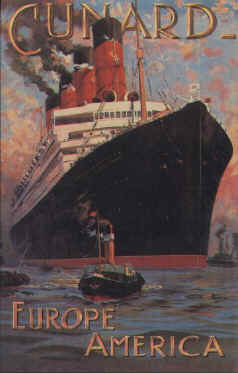
A Cunard poster of the ship beautiful. In its early design. Do note that the bridge and wheelhouse is incorporated into the top deck in front. Sadly, that was just not high enough and soon after a top bridge was added and it did spoil the look of the ship a bit. But she was still beautiful.

Here she is as a hospital ship during the early part of World war One. Note that the bridge of the ship had not yet been altered. She had such beautiful lines. This photograph is very becoming .
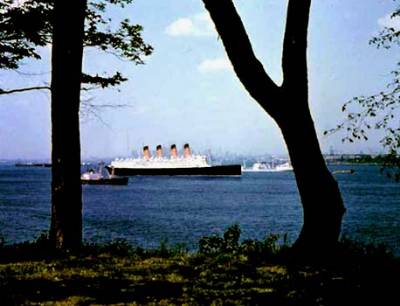
A rare color photo of the Aquitania coming into New York in the late 1930's
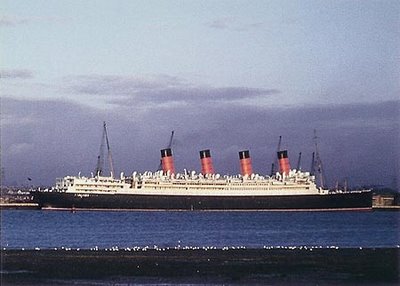
A very late photograph of the ship. This photo dates to around 1948. Does not look bad for a 34 year old ship.
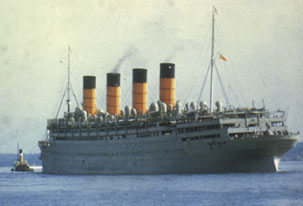
The ship did a great deal of troop transporting during World War Two. She was one of the first ships that went into Pearl Harbor after the attack. She traveled hundreds of thousands of miles and carried hundreds of thousands of troops during the war. She was the only big major liner that served successfully in both world wars. In this picture you see her in 1945-46 returning servicemen..By the end of the war the company colors were added to the funnels of the ships. She was affectionately called by the sevicemen "Granny" She was older than most of the people on her in World War Two.

The end of the road....The venerable ship sails for the breakers in 1950. You will see they kept adding onto the wheelhouse during WW2 and it was starting to look stupid. But here she sails to immortality...She will forever be known as the ship beautiful
She made her maiden voyage weeks before the onset of World War One. It was often said she looked like a larger Lusitania, and she had many of the features of the Lusitania, but had better lines.
She grew out of the great race that was taking place between the English, French and the Germans.
Each country produced it version of 4 stacked liners...The English produced the most..with names like the Olympic, Titanic, Britannic, Mauritania, Lusitania.
There were some 4 funneled ships produced in the 1920's but were not of the class and style of these floating palaces....The Aquitania was the last of the great floating palaces of the pre war age for England.
My Grandfather went to WWI on the Olympic and returned here on the France..Both were 4 stackers..
By the mid 1930's she was the last of the English 4 stackers still sailing. By 1942 she was the last period of any 4 stacker.
When the 4 stack craze started in Germany with the Kaiser Wilhelm De Gross in 1897, it was thought that immigrants would be impressed by the number of funnels. In fact, it was stated by many that the more funnels the safer the ship!
That went out the window with the Titanic!!
She served under one house flag for 35 years...Very few ships have ever had a career and a following by the world as this wonderful ship had. She was removed from the world 7 years before I joined it, so I never got to see her...
However, I did get to see both the Queens sailing..The Queen Mary in New York in 1965, and the Queen Elizabeth in Port Everglades, Florida in 1969.
I have found some photos of this great ship and introduce you to her, and for a few of you reintroduce you to her...The one and only Aquatania.

A Cunard poster of the ship beautiful. In its early design. Do note that the bridge and wheelhouse is incorporated into the top deck in front. Sadly, that was just not high enough and soon after a top bridge was added and it did spoil the look of the ship a bit. But she was still beautiful.

Here she is as a hospital ship during the early part of World war One. Note that the bridge of the ship had not yet been altered. She had such beautiful lines. This photograph is very becoming .

A rare color photo of the Aquitania coming into New York in the late 1930's

A very late photograph of the ship. This photo dates to around 1948. Does not look bad for a 34 year old ship.

The ship did a great deal of troop transporting during World War Two. She was one of the first ships that went into Pearl Harbor after the attack. She traveled hundreds of thousands of miles and carried hundreds of thousands of troops during the war. She was the only big major liner that served successfully in both world wars. In this picture you see her in 1945-46 returning servicemen..By the end of the war the company colors were added to the funnels of the ships. She was affectionately called by the sevicemen "Granny" She was older than most of the people on her in World War Two.

The end of the road....The venerable ship sails for the breakers in 1950. You will see they kept adding onto the wheelhouse during WW2 and it was starting to look stupid. But here she sails to immortality...She will forever be known as the ship beautiful
Wednesday, December 13, 2006
Columbia Double Disc records....What a great idea!! Amazing it took till 1908 for it to happen
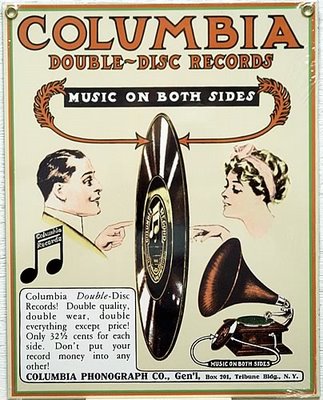
Wow, what a great idea! Put a record on both sides! One would think that it would be a no brainer!
But in the early days of the recording industry that was not case. Records were always made in a single sided format. It was not until the first successful two sided records were made by the Columbia Phonograph Company in 1908 that everyone took notice. The Columbia Co. came up with what they called their “Double Disc Record” and it was very successful and led every other company to follow their lead, some reluctantly.
There were advertising records made by Columbia recording artists such as Frank C. Stanley (William Stanley Grimstead) and Henry Burr ( Harry MacClasky) telling the wonders of the double disc record pointing out the consumer would be buying two records for just a slightly higher price than the cost of a single sided disc.
The Victor Talking Machine Co. was not pleased with this new product and told its dealers not to push the double sided records and to push the single sided ones because they were more profitable for the dealer and the production company.
However that was not a successful strategy and the single sided record would slowly disappear from the market.
In the world of classical recordings the idea of putting two sides on a record was not looked on with favor by those companies. Singers such as Caruso, Melba, and Patti were always identified with one sided recordings that were deemed to be a sign of class and snob appeal. In fact the Victor Red Seal records would remain in single sided form until 1922! That year the single sided policy became a “dinosaur” in the eyes of the buying public and was terminated.
Tuesday, December 12, 2006
Abraham Lincoln ...His patent for 1849...He was the only person who became President who ever had a patent
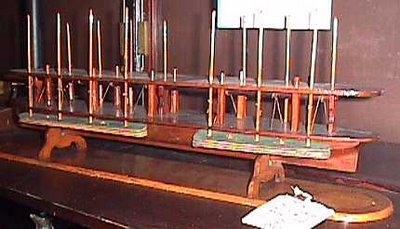
Lincoln's patent model from 1849
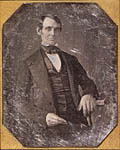
Lincoln in the 1840's

Lincolns patent model tag
I have been spending a lot of time with Lincoln as of late...Oh well, he is so amazing in so many different avenues.
Lincoln started work on his invention between sessions of Congress in 1848. On his way home to Illinois his boat became stranded on a sandbar. As Herndon told the story, "The captain ordered the hands to collect all the loose planks, empty barrels and boxes and force them under the sides of the boat. These empty casks were used to buoy it up. After forcing enough of them under the vessel she lifted gradually and at last swung clear of the opposing sand bar."
Herndon observed, "Lincoln had watched this operation very intently. It no doubt carried him back to the days of his navigation on the turbulent Sangamon, when he and John Hanks had rendered similar service at New Salem dam to their employer the volatile Offut. Continual thinking on the subject of lifting vessels over sand bars and other obstructions in the water suggested to him the idea of inventing an apparatus for this purpose."
Lincoln created a scale model of his invention with the help of Walter Davis, a Springfield mechanic, who provided tools and advice. Herndon recalled, "Occasionally he would bring the model in the office, and while whittling on it would descant on its merits and the revolution it was destined to work in steamboat navigation. Although I regarded the thing as impracticable I said nothing, probably out of respect for Lincoln's well-known reputation as a boatman."
With some relief Herndon said, "the invention was never applied to any vessel, so far as I ever learned, and the threatened revolution in steamboat architecture and navigation never came to pass."
Lincoln took the scale model with him to Washington and hired attorney Z. C. Robbins to apply for the patent. Part of his application read, "Be it known that I, Abraham Lincoln, of Springfield, in the county of Sangamon, in the state of Illinois, have invented a new and improved manner of combining adjustable buoyant air chambers with a steam boat or other vessel for the purpose of enabling their draught of water to be readily lessened to enable them to pass over bars, or through shallow water, without discharging their cargoes..."
William Henry Pratt 1887-1969 ....He was very famous, but I am sure you do not recall his name.... He used another, and I am sure you know it
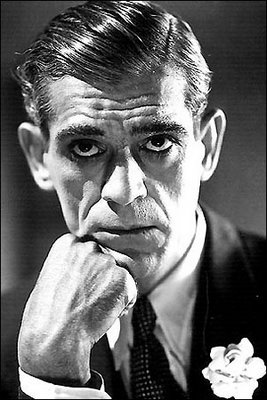 He had the sweetest personality. He was always giving to charities..He was nothing like the people or things he played in film.
He had the sweetest personality. He was always giving to charities..He was nothing like the people or things he played in film.He was great star, he was famous for being a monster. He did many silent pictures. He studied Shakespearian theater. He got a great break in 1931 to play a role that was so different from what he had ever played. In fact he did not even get credit for it. What was the role......... Frankenstein, and what was the name Pratt used...Boris Karloff.
He started there and left us being the voice of the Grinch who stole Christmas...He had a hell of a career...But Mr Pratt was never like any of the creatures he played...He was a sweet, beautiful, shy man. Thank you Mr. Pratt for all the great movies and recordings you made...You made many of us shake with horror and admiration.....
The Magnificent find ...... The story of how a 14 year old boy discovered the only picture of Lincoln in death

This is the amazing photograph ...Taken in New York City. It was taken in City Hall in April 1865. It is the only photo of Lincoln in death. It was supposed to have been destroyed by Stanton, Lincoln's Secretary of War...But in 1952, the impossible seemed to happen to a 14 year old boy!
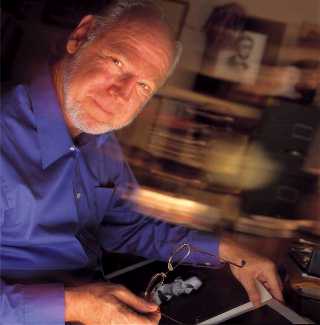 Dr. Ron Rietveld
Dr. Ron Rietveld A very lucky young man
A very lucky young man When I was a boy, from the age of I would say maybe 6 years of age. I started to devour everything I could on Lincoln. By the age of 10, I had an encylopedic brain trust of everything dealing with Lincoln.
I was allowed in local libraries and read the adult books as there was little left for me to read in the childrens sections...I read, and read and studied. Soon it encompassed much of history itself...No subject was to be neglected...I as a young boy had a heart murmur and I was told I could not play sports or run around so that energy was placed in study. In my local library were a collection of very old books and papers and I used to pour through these books to learn more of the more odd areas of history and the forgotten topics that once were so important. That was a treat. I still do that.
Today as a more mature man I have this amazing resource in my mind. I am blessed to have at my call this tremendous amount of information on history. I am very blessed in this fact.
When I read the story of the young man who discovered the last picture of Abraham Lincoln in death, I was taken so by his story. Reading the libraries dry on history, having a heart murmur, and not being allowed to run around, and talking to all the old timers he could, I found a kindred spirit. I have found a first person account with this amazing man Ron Rietevld on "Abraham Lincoln online". It is a wonderful resource.
I think his story is most amazing and very much worth sharing. I have added two oral histories with him. They are long but well worth reading. He was and is a most fortunate man. I understand the special importance with touching our past..I was lucky in the area dealing with Thomas Edison and knowing many who knew him...So here is his story, a most amazing find......The dream of every youthful historian.
The Magnificent Find
Discovering the Lincoln Death Photograph
More than 50 years ago a 14-year-old boy found a photograph of President Abraham Lincoln in his coffin taken on April 24, 1865, in New York City. The discovery startled historians, because Edwin M. Stanton, Lincoln's Secretary of War, had ordered this photograph to be destroyed. Stranger yet, the one surviving print remained with Stanton, whose son preserved it. This is a first-person account of the discovery, as told by Dr. Ronald Rietveld, professor of history, California State University-Fullerton.
As a boy I got interested in Lincoln about 1942. I had a heart murmur and wasn't allowed to play sports. At the time, it was thought that children who had heart murmurs might just fall over dead. So I had to do something, and I turned to the world of reading. Early on, American history attracted me and Washington and Lincoln became my heroes. Then I began to write people. I wrote to the last living Civil War veterans as a boy -- there were still seven alive in 1950 when I wrote them. Supposedly the last one died in 1959 at 117; there's a debate about that particular one.
I also wrote to Carl Sandburg, the poet who was known for his Lincoln biographies. When I was in fifth grade the Des Moines Public Library let me check out books in the adult section because I had devoured everything on Lincoln and the Civil War and George Washington in the children's section.
The story begins back in the 1950s. I had read an article about Judge James W. Bollinger, who was a Lincoln collector in Davenport, Iowa. It was a nice feature article in a Des Moines, Iowa, newspaper about how he was collecting books and signatures and documents of President Lincoln. And so I wrote Judge Bollinger, which meant that Iowa's oldest Lincoln enthusiast, and probably Iowa's youngest, were correspondents.
Later I read that Judge Bollinger died and had given his collection to the University of Iowa at Iowa City. So in 1951 I wrote a letter to the university and said I had known the judge as a correspondent and as a friend and was wondering if I could attend the dedication of the Bollinger Lincoln Collection at the university in November. I was 14 years old at the time. I hadn't heard anything at all and I thought they didn't get the letter or certainly had ignored it because I was a boy.
Then I got a phone call from Clyde Walton who was in charge of the collection and later became State Historian of Illinois. Clyde said in essence: "Are you for real? Were you really a friend of Judge Bollinger, did you really correspond with him?" When I said I had, he replied, "You need to come and be our guest at the dedication of the collection on November 19 and 20." I told him I would love to. My parents agreed, dressed me up in my finest clothes, and put me on aboard the Rock Island Rocket in Des Moines.
I went by myself to Iowa City and was met there by a relative of the family lawyer and they took me home as their guest. When I arrived at the university for the dedication all the great Lincoln scholars were there except Carl Sandburg: Harry Pratt, State Historian of Illinois; Paul Angle, Director of the Chicago Historical Society; Fern Nance Pond, the New Salem historian; Louis Warren of the Lincoln National Life Insurance Company Foundation and Museum; Harry Lytle, a friend of Judge Bollinger's from Davenport; and Benjamin Thomas, who was then finishing his Lincoln biography. Approximately 60 collectors and students were present at the evening banquet which opened the dedication. Paul Angle was the guest speaker at the event. I met them all and we became good friends.
There were two days of dedication, including some speeches, and I still have a copy of the official results. While there we made a film (which still exists) of the scholars at the dedication and I was included in that group. Harry Pratt took a liking to me and asked, "Ronald, have you ever been to Lincoln's home or tomb?" When I said that I hadn't, he replied, "How would you like come as our guest and stay with Marion and me?"
Marion was his new wife and one of the assistant editors of The Collected Works of Abraham Lincoln. When I agreed to come, he said, "I tell you what, we'll let you know when everything is set and I'll mail you a postcard. You just get on a bus and come to Springfield and Marion and I will meet you."
The Momentous Trip to Springfield
So Mother put me on the bus at Des Moines; I changed busses alone at Galesburg, Illinois -- I don't think I'd ever let my kids do what I did. When I got to Springfield the Pratts met me. From there they took me to New Salem to a pageant that evening and I stayed in their home. On Sunday morning, July 20, 1952, we were supposed to get up and head for church but we overslept.
Instead, they decided after breakfast that Harry would take Marion to the Lincoln Home. The second floor was where Virginia Stuart Brown lived. (The second floor of the home was not open then to the public.) Virginia was a cousin of Mrs. Lincoln, a great-granddaughter of John Todd Stuart. So Marion stayed with her and continued to work on the galley proofs of the Collected Works, which I have today in my own collection.
Harry and I went off to the Centennial Building on the state complex grounds. He was writing a review of a book and took me to the Lincoln-Horner Room and said he would open up the file of the Nicolay-Hay Collection. When he took me to the file in the library, he said I should feel free to take anything out, walk into the Lincoln-Horner Room, sit down and look at it, but I must return everything exactly the way I found it. He was going to write his review meanwhile. So he went off to his office and I went to the file.
The Eye-Popping Discovery
I started going through the Nicolay-Hay papers. These were the papers John Hay's daughter gave to the Illinois State Historical Library in 1943 as a result of the writing of the 10-volume set of the life of Lincoln. [John Nicolay and John Hay were White House secretaries during the Lincoln administration.] I came to a file called X:14. I'll never forget the number -- it's burned in my memory. Of course, the burning came later. I took it in, opened it up, and was reading Nicolay's notes about Mrs. Lincoln's visit to City Point [Virginia] and the fiasco that occurred there after her head had been hit on the top of a carriage during a very bumpy ride.
When I finished, I saw an envelope laying there from 1887, sent from Minnesota to John Nicolay at Georgetown. I opened it and there were two pieces of regular stationery paper plus another piece of regular stationery folded in thirds; I laid the last piece aside. I read the first piece, which was the letter from Lewis H. Stanton to John Nicolay, saying in essence, "I have found this in my father's papers and perhaps you'd like to use it," and then he said, "What did you think of McClellan's story?" I forgot about the contents. I folded it, put it back in the envelope, put it back in the manilla folder, and realized I left something out.
I opened up the folded sheet of plain stationery and there lay a faded brown photograph. I thought it was sepia tone at first, and then I saw what it was immediately. I knew Lincoln photography fairly well at 14 and knew that this picture, if it was indeed a photograph, did not exist. I had a copy of the May 6, 1865, issue of Harper's Weekly at the time, in which the scene is sketched, because there were no photographs published.
So I knew where it was taken -- it was New York City, and when it was taken -- April 24, 1865, and I picked it up and ran in and said, "Harry, look at what I just found! This is a picture of Lincoln in his coffin taken in New York City at the time of the funeral!"
He looked at it and said, "Oh! Let's check you out to see if you are right." So we walked all the way from his office to the Lincoln-Horner Room and he got out two different volumes and opened them and said, "You've got the right date, you've got the right place. Now can you keep still?" When I asked why, he said, "Well, we'll have to do research on this before we release it to the country."
I said, "Yes, Harry, I won't say anything." You have to realize, I'm 14 and have a lot of chutzpa for a boy of that age so I said, "I won't say a word provided you give me a copy of the photograph." He promised to do that. To spin ahead, Harry kept his word. I still have the copy he gave to me. Meanwhile, of course, I kept still.
The Photograph Makes National News
About 5:30 the morning of September 14, 1952, my mother was shaking me awake, saying that Grandpa Rietveld had just called and said my picture was on the front page of the Des Moines Register and wanted to know if Mother knew about this thing. Mother said, "What is this?" Her famous line was, "What did you do wrong? What happened?" And I said, "It was that Lincoln picture I found this summer in Springfield."
She demanded, "What Lincoln picture?" I answered, "The one I found when I was with Dr. Pratt." Then, of course, I told the story. The phone began to ring. The Des Moines Register wanted to do a feature article on it and ultimately they came out. Harry had given my name in the main story to the Associated Press, so my name and the photograph appeared across the country. Harry collected several of the articles and sent the clippings to me as a gift.
Then Life magazine picked up the story from Stefan Lorant because Marion wanted to give the picture to him for his volume on Lincoln photographs. So he wrote the September 15, 1952 article that's in Life. My name did not appear in the article and Louis Warren noticed it, saying that should be corrected. He said I should write a letter to Life, so I did and they checked with Dr. Pratt to see if it was true. In the October 6, 1952 issue, Dr. Pratt talks about me as a Lincoln scholar and validated that I found the photo. So in the Letters to the Editor you will find the picture and his comments. After that, when it was released in Lorant's book, Louis Warren told him he should send me a complimentary copy of his new book. Lorant did so, saying it was "for your magnificent find."
There's a little addendum to this story. I later received a book in the mail from Dr. Pratt -- one of [James Fenimore] Cooper's novels. It belonged to a set owned by the Chenery House in Springfield (the hotel where the Lincolns stayed just before leaving town). Lincoln took another volume from the set with him to Washington. Dr. Pratt had the whole collection, but he broke it up and sent me one book in appreciation for finding the Lincoln photo.
Meeting the Last Person to See Lincoln in Death
Dr. Rietveld also had the privilege of becoming acquainted with Fleetwood Lindley of Springfield, Illinois, the last surviving person to see Lincoln in his coffin. Lincoln's remains had been moved many times since arriving in Oak Ridge Cemetery, and a small number of people saw the coffin opened one last time to ensure it actually contained Lincoln's body. Here is Dr. Rietveld's account:
This story begins with our friends George and Dorothy Cashman, curators of the Lincoln Tomb in Springfield. George came there in 1950; I first met him in 1952 and he was there for about 20 years. My wife Ruth and I often stayed with the Cashmans in their home when I was a graduate student at the University of Illinois. One day they said they would show us the old Clayville Tavern west of Springfield, which had been opened to visitors. They had a mutual friend they thought we would enjoy meeting.
So they drove us out to Clayville Tavern, and there was Fleetwood Lindley. This would have been the fall of 1962 because he died in 1963. I asked him, because I was told he was present, to tell the story of his seeing Lincoln's body. He began by telling me that in 1901 his father, who was a member of the Lincoln Honor Guard, was going to be present for the moving of the body from outside where it was, to inside the Lincoln Tomb.
He said paper was put over the windows so no one could see into the tomb. His father told him that he would call the principal of his school and tell him to contact Fleetwood in class if he could come out to the tomb. So he said, "If you get a request from your principal, you get on your bicycle and immediately go out to the tomb. Tell no one."
So the principal told Fleetwood that his father had called and sent for him to go to the tomb. He got on his bike and rode there and parked his bicycle. His father met him and they took him into the chamber where he saw several of the Honor Guard plus the two plumbers who had opened the coffin in 1884. These two men had sealed it in 1884 and now they were going to re-open it.
He said he watched them as they opened the lead lining of the coffin. Inside the coffin was the lead lining, so the president's remains were sealed in lead. The plumbers with their torches opened the lining very carefully and rolled it back. When that happened, a fetid smell emerged for a moment and people didn't look in till it dissipated.
Then one by one everyone had the opportunity to look in and Fleetwood said, "There was Lincoln in person." He told me that the eyebrows were gone. The beard was in place. The pillow underneath his head had decayed enough so that the head had turned at an angle as it fell back a little but it was okay. His clothing was the original suit that he was buried in, with the remains on it like a silk American flag that had dissipated -- red, white and blue. Someone had laid a flag on the breast of the president. The stock tie was in place.
He said that Lincoln looked white. When Lincoln was on his funeral journey his body had turned dark, and starting in New York City, they had begun to chalk the features. By the time the remains got to Springfield they were really a brown color. Fleetwood said the attempt to chalk the face of the president could be seen, but a light, white mold had replaced the dark and Lincoln had turned white again.
He said to me, and I'll never forget it, "Any school boy would know that it was Abraham Lincoln." There was no question it was the president that everyone had grown up with in pictures. So he took one last look -- everybody had their last look -- and then the plumbers resealed the coffin as they had done before, and they put the lid back on. Fleetwood said he helped them man the ropes to lower the coffin into the 10-foot-deep gravesite. He said that he was one of those who was the last to let go of the rope as they put in the president's remains.
Then metal bars were placed over the coffin and cement was poured from above so the coffin was encased in metal and cement, never to be disturbed again. In 1876 Robert Todd Lincoln, the president's son, had been horrified and Mrs. Lincoln had been alive at the time, when the there was an attempt to steal the body. It was Robert's memory of that which bothered him, thinking that after his own demise that his father's body could still be taken.
So it was Robert who designed the gravesite. We still don't know why Robert separated his mother and his father in the burial chamber. Before that time (even though after 1876 there was no body in the sarcophagus -- the sarcophagus remained visible and people honored an empty box) President and Mrs. Lincoln were together under the shaft of the tomb. [Mary Lincoln died in 1882.] Robert separated his parents in the final design of the grave. So that's why Lincoln is alone and Mary and the children are in the crypts behind his.
Fleetwood said he remembered the experience clearly. He could still recall seeing the face and as a 13-year-old boy he realized then that it was a lifetime experience. Then I shared with him that I had been about the same age when I found the photograph when he saw the president's remains. So Fleetwood and I have that in common.
When I was present at a conference in Springfield on Lincoln's Birthday a few years ago, I was talking about Fleetwood with someone. A man came up behind me and said Fleetwood was his uncle. He didn't know that anyone remembered Fleetwood Lindley.
It's interesting to think that as a boy I found the last photograph of the president in death, which triggered a phone call from James Wheeler of Des Moines whose father was Lincoln's White House gardener [Thomas G. Wheeler]. James Wheeler knew the president as a six-year-old, and Lincoln teased him about stealing some figs off a White House tree. His father took him to see Lincoln's body at the Rotunda in the U.S. Capitol. So in some strange way my life has been connected directly with the death of President Lincoln. Not only in 1865 but in 1876 because of the stealing of the remains; they were sealed up, moved out of the coffin, then in 1901 were placed where Fleetwood Lindley saw them.
Probably one of the greatest events for me in my Lincoln career was the dedication of the Bollinger Lincoln Collection because I met all the Lincoln scholars except Carl Sandburg and they were good to a boy. Out of that, the boy took it and made a career of it.
Sunday, December 10, 2006
The shaving of underarms and legs by women in the United States...When did it all start???
 The divine Sarah She always covered her upper arms and legs
The divine Sarah She always covered her upper arms and legs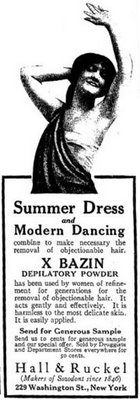 The early ads were very different from what was considered normal for the time. Here is an early ad from 1915
The early ads were very different from what was considered normal for the time. Here is an early ad from 1915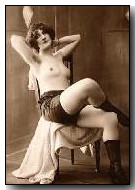
Here is a very naughty Victorian picture...as you can see in this 19th century view underarm hair was in vast abundance
 A scene from D.W. Griffith's Intolerance of 1916..There were many scenes of women without underarm hair...It was a major moment in movies
A scene from D.W. Griffith's Intolerance of 1916..There were many scenes of women without underarm hair...It was a major moment in moviesI have taken some info from the Journal of American Culture by Christine Hope bearing the grand title "Caucasian Female Body Hair and American Culture."
The gist of the article is that U.S. women were browbeaten into shaving underarm hair by a sustained marketing assault that began in 1915.
The national Campaign was to inform American womanhood of a problem that till then it didn't know it had, namely unsightly underarm hair. Oh the horror of it all!!
To be sure, women had been concerned about the appearance of their hair since the dawn of fashion, but only the hair you could see. Before World War I this meant scalp and for men and some women facial hair.
Around 1915, however, sleeveless dresses became popular, opening up a whole new field of female vulnerability for marketers to exploit. And did they!!!
The underarm campaign began in May, 1915, in Harper's Bazaar, a magazine aimed at the upper crust.
The first ad's had a waist-up photograph of a young woman who appears to be dressed in a slip with a toga-like outfit covering one shoulder. Her arms are arched over her head revealing perfectly clear armpits.
The first part of the ad read `"Summer Dress and Modern Dancing combine to make necessary the removal of objectionable hair.'"
Within three months the term "underarm" was being used. A few ads mentioned hygiene as a motive. For getting rid of hair but most appealed to being hip. Hair was a major no no...
"The Woman of Fashion says the underarm must be as smooth as the face," read a typical pitch.
The budding obsession with underarm hair drifted down to the middle classes fairly slowly, roughly matching the widening popularity of sheer and sleeveless dresses.
Antiarm hair ads began appearing in McCall's in 1917. Women's razors and depilatories didn't show up in the Sears Roebuck catalog until 1922, the same year the company began offering dresses with sheer sleeves.
By that time body hair was looked at with horror...Specially in the movies. D.W. Griffith had made the movie Intolerance in 1916 ..It had many scanty clad women. All of them have shaved underarms. This was before the Hayes gang controlled what we saw in movies.
By then the underarm battle was largely won. Advertisers no longer felt compelled to explain the need for their products but could concentrate simply on distinguishing themselves from their competitors.
The anti-leg hair campaign was more fitful. The volume of leg ads never reached the proportions of the underarm campaign.
Women were apparently more unwilling about calling attention to the lower half of their anatomy.
Besides, there wasn't much practical need for shaved legs. After rising in the 1920s hemlines dropped in the 1930s and many women were content to leave their leg hair alone.
Still, some advertisers as well as an increasing number of fashion and beauty writers harped on the idea that female leg hair was a curse, and just nasty
Some have argued that Greek statues of women in antiquity had no pubic hair, suggesting that hairlessness was the ideal of feminine beauty embedded in Western culture.
If so, a lot of Western culture never got the message. The practice has been confined largely to English-speaking women of North America and Great Britain, although it seems to be spreading in other areas.
So the next time you see a woman all shaved and prettied up as we think she should be, remember 100 years ago it was not at all like that...
Friday, December 08, 2006
Teddy Roosevelt IS NOW in space on the Space Shuttle Discovery..The historic cylinder made by Edison is circling the earth ..How cool is that!!!.
 This is the cylinder that is on the shuttle now. This recording was made in 1912. The historic recording is making history just like man who is recorded on it is doing.
This is the cylinder that is on the shuttle now. This recording was made in 1912. The historic recording is making history just like man who is recorded on it is doing.
Side way view of the historic cylinder...It is historic for what it is, but even more so for where it will go. It is now weightless and in an environment that it has never seen in nearly 100 years. How I wish I was with it right now!
The news and newspapers have had fun with the idea of this record going to space. CNN has mentioned it quite often....It really is a neat thing to do
I was given the chance to send something into space.....So I gave to Mrs. Polansky, mother of the Commander of the coming shuttle mission this recording of Theodore Roosevelt. Mark Polansky who is the commander has brought the historic recording along with him.
I came up with the idea of sending a recording of President Theodore Roosevelt into space...Roosevelt was the first President to fly, so symbolically he will go to space as well. This Edison Blue Amberol Cylinder is already historic and now it will make even more history for what it will do!!!!!!...
So on this day December the 9th, 2006 The historic Edison cylinder of Theodore Roosevelt will do what would even make the rough rider gasp with astonishment.
Now as I write this the historic cylinder is circling the earth, and is making history....Much as the two men involved in the making of this recording did. Symbolically Edison and Roosevelt are members of the crew of Discovery.
After the flight the cylinder will be returned .....It will have traveled 5 million miles..and then returned to earth...
The recording will be at the space station for a week or so and I wonder what Edison would say about this if he could...Heck I wonder what Teddy Roosevelt would say?
It will be so exciting to play it when it returns and see if space and none gravity have an effect on a near 100 year old recording...
I am sure Thomas Edison and also Theodore Roosevelt would have approved of this idea...I think it is fun!
I do wish the crew of the shuttle a safe and happy flight...I will be watching and see not only the crew, but Theodore Roosevelt and Edison go into space.....Thank you Mrs. Polansky and Mark,Commander of this mission for allowing me to do this. It is good to have some fun with history ......To quote Roosevelt..."Bully"
Tuesday, December 05, 2006
Joseph Jefferson 1829-1905 One of the great Theatrical stars of the 19th century

Joseph Jefferson in his most famous role Rip Van Winkle. This is how the world will always remember him.

This book was put out by his family shortly after his death...It is a remarkable book full of pictures of a great career

I am lucky to have his autograph, the person who owned this book put it into it, and now over 100 years after his death it is nice item to have.
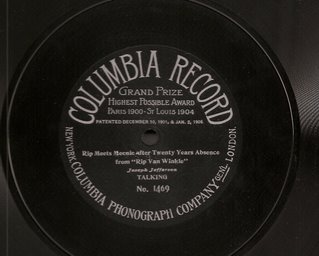
He was one of the first stars of stage to make records. He made few for Berliner in the 1890's and then in 1903 made a few for the Columbia Phonograph Company. Today his recordings are exceedingly rare. This Columbia recording is from a scene from Rip Van Winkle. I found this record in 1981. It was in a collection of new dealer stock records. It looks like it is new, even though it was made 100 years ago.
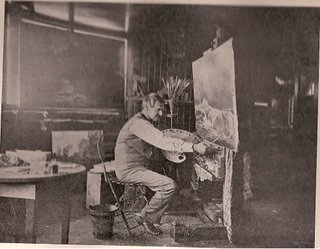
Jefferson was also quite an artist, his pictures were always well received and still collected today.
 These are pictures of Jefferson playing his most famous role in England in 1865...
These are pictures of Jefferson playing his most famous role in England in 1865...
He also played in Our American Cousin, but was not in it the night Lincoln saw the play and was assassinated
He was one of the greats of the 19th century. He was up there with the Booths. He played all over the world from his first moments on stage in 1837 till his last performance in Paterson, New Jersey in 1904. He was one of the co founders of the famous Players Club in New York. The first president of the Players Club was Edwin Booth, and the second President was Jefferson. I was at the Players Club a few years ago and when inside I saw a massive portrait of Jefferson and I gushed on about his and my hosts were so happy I knew of him.
He was great friends with the high and mighty and the common folks as well. He would often go hunting with President Grover Cleveland, and would be a great adviser to Admiral Dewey.
He performed all over the world, and was loved by many in the world. Today his name is really not known save for a few in the theater world. Tony Randall told me when I met and recorded him that he named one of his children after him. I thought that was a wonderful tribute to Jefferson. Randall also said that he had a complete collection of his (Jefferson's) recordings.
Jefferson was most famous for his role of Rip Van Winkle. He played that role for over 50 years and it was his signature. He even played that role for his last performance in 1904, in Paterson, New Jersey.
Jefferson's career went back to 1837, when he first appeared on stage. He would be on stage for 67 years after that playing all over the world. For Kings, Queens, Presidents, and other great persons of that age.
He was one the first great stage persons who allowed their voice to be recorded for commercial recordings. I find it most fascinating to listen to his records now and think that it belongs to someone who's voice has been still for over 100 years.
He was great friends with President Grover Cleveland. They would often write to each other and keep each other informed of the others activities..One on the theaters stage and the other on the world's stage.
He was quite an artist, and several of his painting were on display at the 1893 Columbian exhibition in Chicago.
When time ran out on his great and productive life, it was a life well spent and well enjoyed. His children followed in his footsteps but none seems to have the luster that was his.
Today fully more than a century after his death he remains with us in early photographs, films, and those remarkable recordings. He was one of the greats and you should all learn more about this remarkable artist.
I bet it was great time had at the Players Club when Jefferson and Booth were there and enjoying the company of each others genius. It was a different age. An interesting age long before the mass entertainments became the rage.
Yet he is one of the rare ones who's career spanned from an age where there were people who remembered George Washington, to the 20th century and making records of his voice...Quite a career.

He was one of the first stars of stage to make records. He made few for Berliner in the 1890's and then in 1903 made a few for the Columbia Phonograph Company. Today his recordings are exceedingly rare. This Columbia recording is from a scene from Rip Van Winkle. I found this record in 1981. It was in a collection of new dealer stock records. It looks like it is new, even though it was made 100 years ago.

Jefferson was also quite an artist, his pictures were always well received and still collected today.
 These are pictures of Jefferson playing his most famous role in England in 1865...
These are pictures of Jefferson playing his most famous role in England in 1865...He also played in Our American Cousin, but was not in it the night Lincoln saw the play and was assassinated
He was one of the greats of the 19th century. He was up there with the Booths. He played all over the world from his first moments on stage in 1837 till his last performance in Paterson, New Jersey in 1904. He was one of the co founders of the famous Players Club in New York. The first president of the Players Club was Edwin Booth, and the second President was Jefferson. I was at the Players Club a few years ago and when inside I saw a massive portrait of Jefferson and I gushed on about his and my hosts were so happy I knew of him.
He was great friends with the high and mighty and the common folks as well. He would often go hunting with President Grover Cleveland, and would be a great adviser to Admiral Dewey.
He performed all over the world, and was loved by many in the world. Today his name is really not known save for a few in the theater world. Tony Randall told me when I met and recorded him that he named one of his children after him. I thought that was a wonderful tribute to Jefferson. Randall also said that he had a complete collection of his (Jefferson's) recordings.
Jefferson was most famous for his role of Rip Van Winkle. He played that role for over 50 years and it was his signature. He even played that role for his last performance in 1904, in Paterson, New Jersey.
Jefferson's career went back to 1837, when he first appeared on stage. He would be on stage for 67 years after that playing all over the world. For Kings, Queens, Presidents, and other great persons of that age.
He was one the first great stage persons who allowed their voice to be recorded for commercial recordings. I find it most fascinating to listen to his records now and think that it belongs to someone who's voice has been still for over 100 years.
He was great friends with President Grover Cleveland. They would often write to each other and keep each other informed of the others activities..One on the theaters stage and the other on the world's stage.
He was quite an artist, and several of his painting were on display at the 1893 Columbian exhibition in Chicago.
When time ran out on his great and productive life, it was a life well spent and well enjoyed. His children followed in his footsteps but none seems to have the luster that was his.
Today fully more than a century after his death he remains with us in early photographs, films, and those remarkable recordings. He was one of the greats and you should all learn more about this remarkable artist.
I bet it was great time had at the Players Club when Jefferson and Booth were there and enjoying the company of each others genius. It was a different age. An interesting age long before the mass entertainments became the rage.
Yet he is one of the rare ones who's career spanned from an age where there were people who remembered George Washington, to the 20th century and making records of his voice...Quite a career.
Sunday, December 03, 2006
Mark Twain's prayer for those who invoke God into helping them kill the enemy

Mark Twain hated war. I think most people do. He also saw how foolish people would become with religion and their war. Of course today we have all the trouble in Iraq...and I hear much of it deals with religion....Well it often is the root of all evil... Here is Mark Twains prayer for the troops....He composed this while the war was going on in the Philippines. He was so outraged he wrote this. It was not published at the time.
O Lord our Father, our young patriots, idols of our hearts, go forth to battle -- be Thou near them! With them -- in spirit -- we also go forth from the sweet peace of our beloved firesides to smite the foe.
O Lord our God, help us to tear their soldiers to bloody shreds with our shells; help us to cover their smiling fields with the pale forms of their patriot dead; help us to drown the thunder of the guns with the shrieks of their wounded, writhing in pain; help us to lay waste their humble homes with a hurricane of fire; help us to wring the hearts of their unoffending widows with unavailing grief; help us to turn them out roofless with little children to wander unfriended the wastes of their desolated land in rags and hunger and thirst, sports of the sun flames of summer and the icy winds of winter, broken in spirit, worn with travail, imploring Thee for the refuge of the grave and denied it -- for our sakes who adore Thee, Lord, blast their hopes, blight their lives, protract their bitter pilgrimage, make heavy their steps, water their way with their tears, stain the white snow with the blood of their wounded feet!
We ask it, in the spirit of love, of Him Who is the Source of Love, and Who is the ever-faithful refuge and friend of all that are sore beset and seek His aid with humble and contrite hearts. Amen